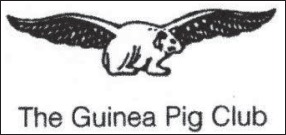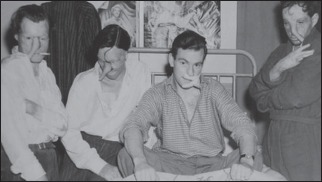
Sir Archibald McIndoe
Sir Archibald McIndoe, the pioneer of post burn reconstruction and one of the four towering British plastic surgeons of the World War II era, was born in New Zealand in 1900.
Along with Sir Harold Gillies, Rainsford Mowlem and T Pomfret Kilner, Sir Archibald McIndoe was given charge of one of the four “cottage hospitals” during the World War II. This was the Queen Victoria Hospital at East Grinstead where the author spent five years of his residency in the UK.
He attended Medical school in his native New Zealand before being invited to the Mayo Clinic for further studies. He initially took up a position as a First Assistant in Pathological Anatomy and was then offered a post as an assistant surgeon where he specialised in surgery of the liver.
Sir Archibald Mcindoe, however, originally became famous for his research on the architecture of the liver and surgery of the liver for carcinoma during his residency and later on during a brief tenure at the Mayo Institute in the United States. He discovered and mapped normal and pathological blood supply to the liver. (Bilaterality of the liver. Arch Surg 1927). He theorised that based on the discovery of a dual blood supply to the liver, one of these could be shut off whilst excising part of the liver. He achieved fame and tenure within the USA for this. His heart however had always been set on working in the United Kingdom.
When he arrived to the UK he had a very difficult time in terms of jobs and a career. It was only a chance meeting between him and Sir Harold Gillies who happened to be a cousin of his that he became involved in plastic surgery and went into partnership and practice with the latter. At the onset of the war it was clear to McIndoe that burns treatment techniques at that time were inadequate involving the use of tannic acid and tannic jelly which when applied to the tissue, dried and tightened the latter and thereby reduced fluid loss. This tightening of the tissues however resulted in severe burn contractures. McIndoe devised new techniques in the treatment of burns including the use of his famous saline burn bath. He pioneered the use of flap construction to rebuild the facial features and hands of Airmen who had been burned during the air battles of World War II.
The movement of tube pedicles from one part to an adjacent area was known as “waltzing”. Although devised by Gillies, McIndoe took it to a new level ensuring that unburnt tissue from distant sites was used to reconstruct and replace burnt tissues. Because of these pioneering techniques these young airmen became known as his guinea pigs.

He was very keen on the rehabilitation of these patients and it was not unusual to find a number of patients with reconstruction at various stages and flaps dangling from their foreheads or inset into their noses, wandering around the streets of East Grinstead during the war.

Although the vast majority of the guinea pigs were crewmen Royal Air Force pilots or bomber crewmen, a number of them also hailed from Canada, New Zealand, the United States, Australia and Eastern Europe.
At the end of the war the Guinea Pig Club number totalled 649 guinea pigs who had undergone treatment in the innovative burns unit at the Queen Victoria hospital at East Grinstead. The comprehensive and holistic treatment and rehabilitation of burns patients in terms of their physical, functional, social and psychological aspects is the legacy of this cousin of Sir Harold Gillies who achieved fame in his own right.
Sit Archibald McIndoe passed away at the age of 59 but left behind a legacy that is both scientific as well as humanitarian.


